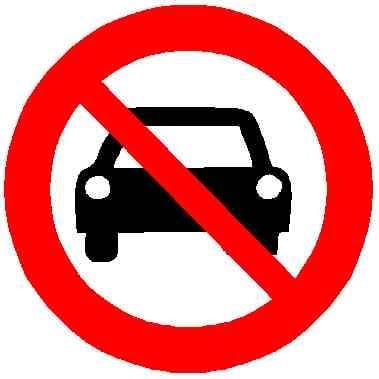Comparison left vs right for a craftsman who doesnt know which one he should buy:
-
l/r same bed size
-
r lower bed for way easier loading/unloading
-
r less likely to crash
-
r less fuel consumption and costs
-
r less expensive to repair
-
r easy to park
-
r easy to get around in narrow places like crowded construction sites or towns
-
r not participating in road arms race
-
l You get taken serious by your fellow carbrained americans because ““trucks”” are normalized and small handy cars are ridiculed.
So unless you are a fragile piece of human, choose the right one.
To anyone claiming that the bigger one is the safer one …
https://pubmed.ncbi.nlm.nih.gov/24499113/
https://worldpopulationreview.com/country-rankings/countries-with-the-most-car-accidents
From the Bloomberg & NLM articles
From a safety perspective, kei cars have a lot going for them when compared with American-style SUVs and trucks. Their light weight generates less force in a collision, and their stubby front ends reduce driver blind spots. Research suggests that their occupants are equally safe as those inside full-sized vehicles.
At first, I was going to criticize the collision speed of the example study, but found ( ok, I say found, I mean I googled for 15 seconds ) that the average American collision is occurring at less than 40mph, so good to go there.
Second, I was going to comment on the relative safety of being in the Kei truck and being struck by the 2500HD… but that just goes back to the ‘participating in the arms race’, so feels… stupid.
So, overall: Thanks for providing this. It directly answers the primary concern of ‘what if I hit something tho’. There are some other angles I could nitpick on maybe, but they all feel like a kind of ‘consolation prize’ to the argument.
One thing you also need to remember, is that the smaller car has a far smaller braking distance and is more maneuverable, so is less likely to get in a crash. The lower centre of gravity also decreases the likelihood of a roll-over.
95% of the craftsmen I know have panel vans. Easier to both organize and secure tools and materials, more overall room.
I lived in (and now commute through) a neighborhood of older houses, and higher incomes, so I see a lot of contractor vehicles. It seems like it breaks down as landscapers and lawn services use the pickup trucks; trades companies (plumbers, electricians, HVAC, carpenters, painters, etc.) use vans or box trucks; and the independent guys tend to use Dodge Caravans. Nearby, the university uses fleets of kei trucks (the low-speed versions because “freedom”), Ford Model E vans, and Caravans. I think the landscaping crew has pickups.
There are an increasing number of company pickup trucks, but most of them appear to be pavement princesses, used only for their usual function: transporting egos, not equipment.
Just gonna keep on posting this

I agree with the sentiment of this post, but to be fair, you can also carry 3 or 4 passengers in the left vehicle, as opposed to only one in the right.
The main problem is the US fuel economy regulations actually encourage manufacturers to build bigger trucks and SUVs so they get classified into a category that has looser fuel economy requirements.
You are right. Still the american truck is hugely oversized, even for 5 persons and cargo. But, for the sake of the argument, imagine standing on the highway. Have a gander at the cars around you. How many people per car do you see? Exactly, 90% of the time there is exactly one person in a car. What makes the american truck an extreme waste of space an ressources, beside being a health hazard to everyone outside of the car.
Cars should get smaller, not bigger.
The extended cab version of the right truck would still tick all the boxes.
Off-road and towing capacity are probably the main feature you give up with that sort of design. Whether or not most people need that is a separate story.
They make kei trucks in 4x4, but you do lose ground clearance.
That being said, what kind of “off road” conditions are any of the trucks really contending with?
Yep. I’m an American tradesman and the trucks that the guys drive are way too beefy for what they actually do.
I’ve gotten by with small Toyota trucks, and rav 4s…much to the chagrin of the good old boys. Should have seen their face when I rolled up in a prius…till I tell em I get 50 mpg easy.
I would love a small little truck like this one in the photo.
The Japanese one would be fun for use in New York City. LOL. Easy parking, easy to navigate double-parked clowns. It just needs a bed cover to lock down anything purchased.
I don’t understand pick up trucks, unless you do landscaping or farming. In a van your shit won’t get stolen as easily.
I was the only guy at the marina showing up in a compact Nissan. Got a lot of shit for it from the raised up pickups.
Yet I always had that extra $20 for beers.
It’s a mystery.
Hey! I live in Korea. These things are ubiquitous. They are colloquially called “Bongos” as that was the name of an older, popular model. There are more and more electric ones on the road these days, too.
Unfortunately, you can find a few of the monstrosities on the left here these days, too, but at least very few. They’ve got nowhere to park them here. Haha!
deleted by creator
I get the point your trying to prove but i don’t think it’s fair to compare these 2 as they are meant for different things and also brings in the assumption that all American craftsman vehicles are 2500HD’s, which is not true.
Now I agree, people using the one on the left specifically as a daily driver is actually overkill and are not using it for what it’s supposed to be used for. The one on the left is a 2500HD. They are SUPPOSED to be used for hauling and carrying equipment. The crew cab is meant to also transport the crew that is for said equipment.
The one the right is specifically meant what appears to be lighter duty use and hauling. I agree that people should use the right tool for the job. I find the one on the right to be very practical. But for the sake of this post as a means to compare Japanese craftsman vehicles to American.
You should actually show something actually comparable. Like a ford ranger with a standard cab. Which might be about the same size and power. Maybe even the same bed size. Not something that has HD (Heavy duty) in its name.
How does each hold up in a collision tho? Crumple zones take up space, not something terribly present in the kei truck.
Not that this makes the 2500’s faults or anything. It just seems worth noticing.
The one on thebleft is definitely better at killing people
Since Americans are obese, it makes sense that their cars are too.
I was looking for the “America bad” comment, was not disappointed. At least that carried over from reddit.
They are absolutely the driver in this market, like it or not.
deleted by creator
But freedoms per burger!







